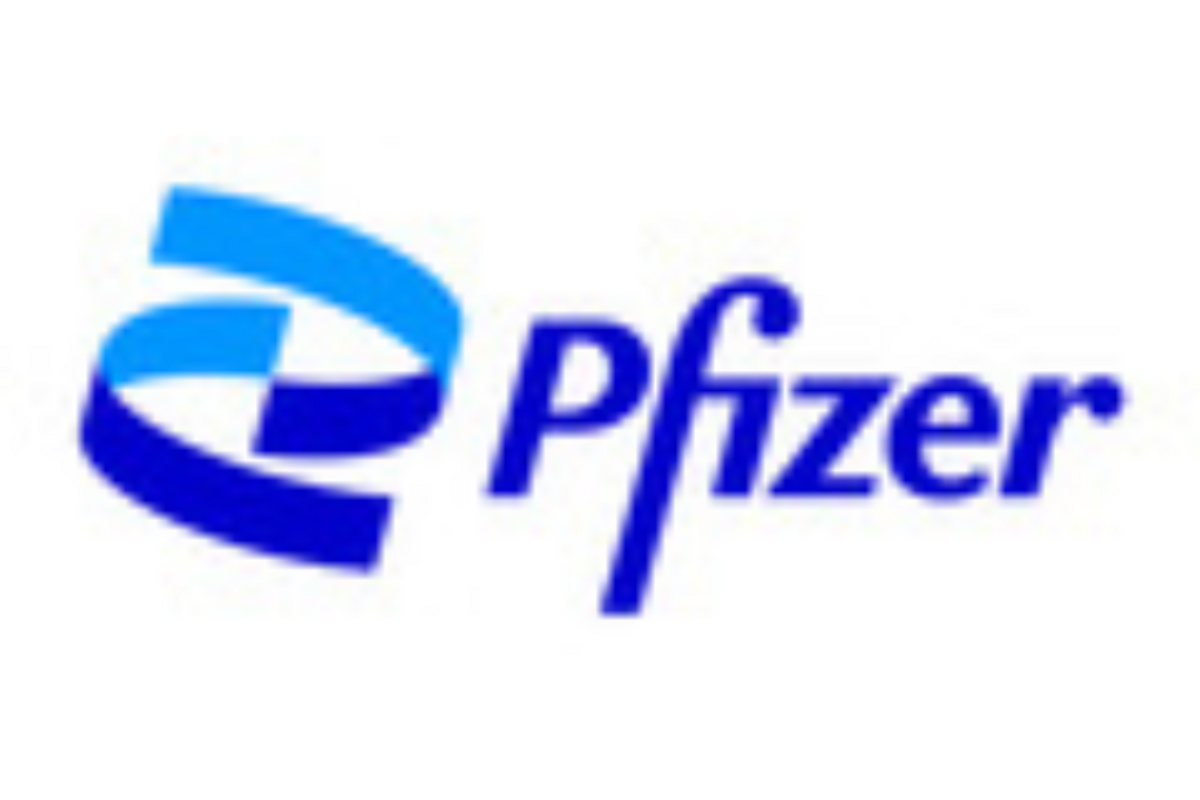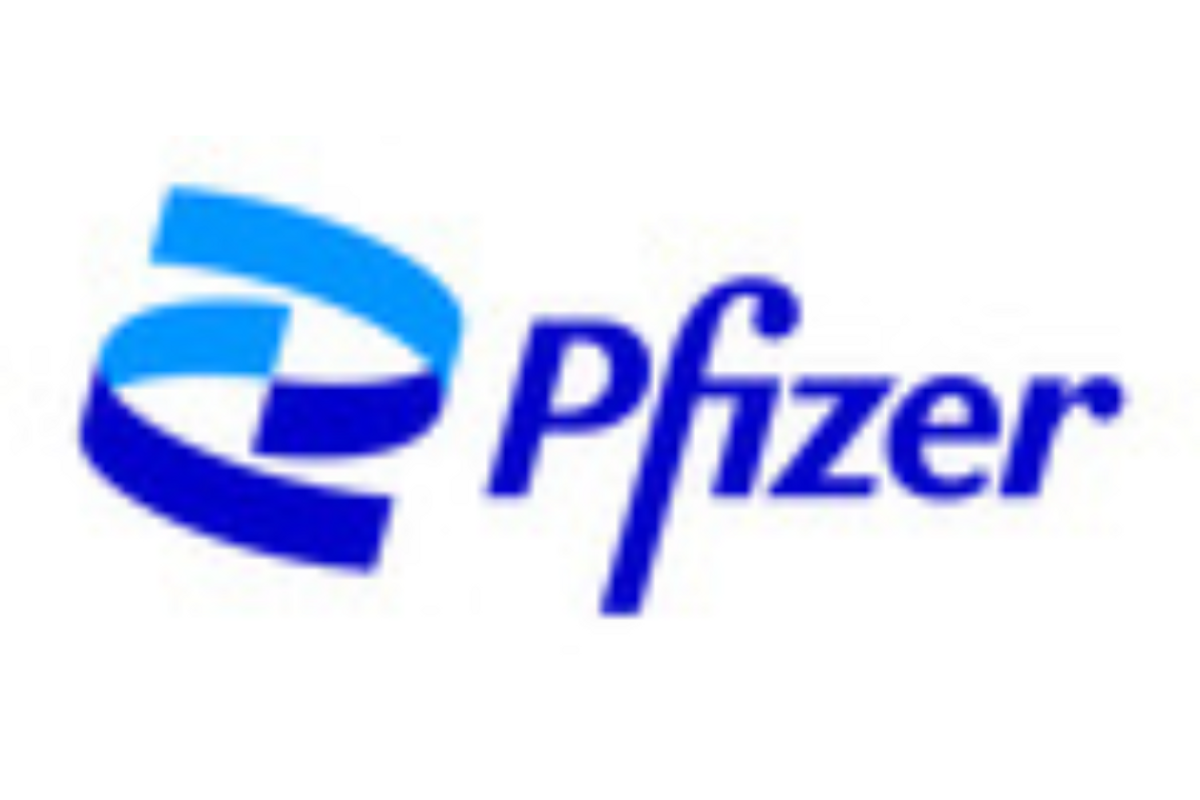Pfizer and Astellas announce positive topline results from Phase 3 EMBARK trial
Pfizer Inc. (NYSE: PFE) and Astellas Pharma Inc. (TSE: 4503, President and CEO: Kenji Yasukawa Ph.D., "Astellas") today announced positive topline results from the Phase 3 EMBARK trial evaluating XTANDI ® (enzalutamide) in men with non-metastatic hormone-sensitive prostate cancer (nmHSPC; also known as non-metastatic castration-sensitive prostate cancer or nmCSPC) with high-risk biochemical recurrence (BCR). Patients enrolled in the trial were randomized to one of three study arms: XTANDI plus leuprolide, placebo plus leuprolide, or XTANDI monotherapy. The study met its primary endpoint with a statistically significant and clinically meaningful improvement in metastasis-free survival (MFS) for patients treated with XTANDI plus leuprolide versus placebo plus leuprolide.
At the time of the analysis, a positive trend in the key secondary endpoint of overall survival (OS) was also observed, but these data were not yet mature. Patients in the trial will be followed for a subsequent final OS analysis. The study also met a key secondary endpoint with a statistically significant and clinically meaningful improvement in MFS for patients treated with XTANDI monotherapy versus placebo plus leuprolide. Additional key secondary endpoints reached statistical significance, including time to prostate-specific antigen (PSA) progression and time to first use of new antineoplastic therapy. Other secondary endpoints are being analyzed. No new safety signals have been observed to date in the preliminary safety analysis, which is consistent with the established safety profile of XTANDI.
"As the only novel hormone therapy approved for three disease states of prostate cancer in the U.S., XTANDI has impacted hundreds of thousands of men," said Chris Boshoff , M.D., Ph.D., Chief Development Officer, Oncology and Rare Disease, Pfizer Global Product Development. "The topline findings from EMBARK are highly encouraging and we look forward to engaging with health authorities to potentially bring XTANDI to men with non-metastatic hormone-sensitive prostate cancer with high-risk biochemical recurrence."
"While current treatment options for localized prostate cancer are intended to be curative, some men remain at higher risk for biochemical recurrence following primary treatment, which may result in metastases," said Ahsan Arozullah, M.D., MPH, Senior Vice President and Head of Development Therapeutic Areas, Astellas. "The EMBARK trial is the first study to demonstrate a statistically significant improvement in MFS using the combination of XTANDI plus leuprolide in men with this stage of disease."
Detailed results from EMBARK will be presented at a future medical meeting. These data will also be discussed with regulatory authorities, including the U.S. Food and Drug Administration (FDA), to support a potential regulatory submission for XTANDI in this indication.
About EMBARK
The Phase 3, randomized, double-blind, placebo-controlled, multi-national trial enrolled 1,068 patients with non-metastatic hormone-sensitive prostate cancer (nmHSPC; also known as non-metastatic castration-sensitive prostate cancer or nmCSPC) with high-risk biochemical recurrence (BCR) at sites in the United States , Canada , Europe , South America , and the Asia-Pacific region. Patients who were considered high-risk BCR had a prostate-specific antigen (PSA) doubling time ≤ 9 months, serum testosterone ≥ 150 ng/dL (5.2 nmol/L), and screening PSA by the central laboratory ≥ 1 ng/mL if they had a radical prostatectomy (with or without radiotherapy) as primary treatment for prostate cancer or at least 2 ng/mL above the nadir if they had radiotherapy only as primary treatment for prostate cancer. Patients in the EMBARK trial were randomized to receive enzalutamide 160 mg daily plus leuprolide, enzalutamide 160 mg as a monotherapy, or placebo plus leuprolide.
The primary endpoint of the trial was metastasis-free survival (MFS) for enzalutamide plus leuprolide and placebo plus leuprolide. MFS is defined as the duration of time in months between randomization and the earliest objective evidence of radiographic progression by central imaging or death. For more information on the EMBARK ( NCT02319837 ) trial go to www.clinicaltrials.gov .
XTANDI has not been approved for the treatment of patients with nmHSPC with high-risk BCR.
About Non-Metastatic Hormone-Sensitive Prostate Cancer with High-Risk Biochemical Recurrence
Non-metastatic hormone- (or castration-) sensitive prostate cancer (nmHSPC or nmCSPC) means there is no detectable evidence of the cancer spreading to distant parts of the body (metastases) with conventional radiological methods (CT/MRI) and the cancer still responds to medical or surgical treatment to lower testosterone levels. 1,2 Of men who have undergone definitive prostate cancer treatment, including radical prostatectomy, radiotherapy, or both, an estimated 20-40% will experience a biochemical recurrence (BCR) within 10 years. 3 About 9 out of 10 men with high-risk BCR will develop metastatic disease, and 1 in 3 will die as a result of the recurrence. 3 The EMBARK trial focused on men with high-risk BCR. Per the EMBARK protocol, patients with nmHSPC with high-risk BCR are those initially treated by radical prostatectomy or radiotherapy, or both, with a PSA doubling time ≤ 9 months. High-risk BCR patients with a PSA doubling time of ≤ 9 months have a higher risk of metastases and death. 4
About XTANDI ® (enzalutamide)
XTANDI (enzalutamide) is an androgen receptor signaling inhibitor. The recommended dosage of XTANDI is 160 mg (capsules or tablets) administered orally once daily with or without food. XTANDI is a standard of care that has received regulatory approvals for use in men with mHSPC, mCRPC, and nmCRPC in the United States and for one or more of these indications in more than 100 countries, including the European Union and Japan . More than 720,000 patients have been treated with XTANDI globally. 5
E.U. Important Safety Information
Enzalutamide is indicated in the European Union for the treatment of adult men with:
1. Metastatic hormone-sensitive prostate cancer (mHSPC) in combination with androgen deprivation therapy (ADT).
2. High-risk non-metastatic castration-resistant prostate cancer (CRPC).
3. Metastatic CRPC who are asymptomatic or mildly symptomatic after failure of ADT in whom chemotherapy is not yet clinically indicated. It is also indicated in adult men with metastatic CRPC whose disease has progressed on or after docetaxel therapy.
For Important Safety Information for enzalutamide please see the full Summary of Product Characteristics at: https://www.ema.europa.eu/en/documents/overview/xtandi-epar-medicine-overview_en.pdf .
U.S. Important Safety Information
XTANDI (enzalutamide) is indicated in the U.S. for the treatment of patients with castration-resistant prostate cancer (CRPC) and metastatic castration-sensitive prostate cancer (mCSPC).
Warnings and Precautions
Seizure occurred in 0.5% of patients receiving XTANDI in seven randomized clinical trials. In a study of patients with predisposing factors for seizure, 2.2% of XTANDI-treated patients experienced a seizure. It is unknown whether anti-epileptic medications will prevent seizures with XTANDI. Patients in the study had one or more of the following predisposing factors: use of medications that may lower the seizure threshold, history of traumatic brain or head injury, history of cerebrovascular accident or transient ischemic attack, and Alzheimer's disease, meningioma, or leptomeningeal disease from prostate cancer, unexplained loss of consciousness within the last 12 months, history of seizure, presence of a space-occupying lesion of the brain, history of arteriovenous malformation, or history of brain infection. Advise patients of the risk of developing a seizure while taking XTANDI and of engaging in any activity where sudden loss of consciousness could cause serious harm to themselves or others. Permanently discontinue XTANDI in patients who develop a seizure during treatment.
Posterior Reversible Encephalopathy Syndrome (PRES) There have been reports of PRES in patients receiving XTANDI. PRES is a neurological disorder that can present with rapidly evolving symptoms including seizure, headache, lethargy, confusion, blindness, and other visual and neurological disturbances, with or without associated hypertension. A diagnosis of PRES requires confirmation by brain imaging, preferably MRI. Discontinue XTANDI in patients who develop PRES.
Hypersensitivity reactions, including edema of the face (0.5%), tongue (0.1%), or lip (0.1%) have been observed with XTANDI in seven randomized clinical trials. Pharyngeal edema has been reported in post-marketing cases. Advise patients who experience any symptoms of hypersensitivity to temporarily discontinue XTANDI and promptly seek medical care. Permanently discontinue XTANDI for serious hypersensitivity reactions.
Ischemic Heart Disease In the combined data of four randomized, placebo-controlled clinical studies, ischemic heart disease occurred more commonly in patients on the XTANDI arm compared to patients on the placebo arm (2.9% vs 1.3%). Grade 3-4 ischemic events occurred in 1.4% of patients on XTANDI versus 0.7% on placebo. Ischemic events led to death in 0.4% of patients on XTANDI compared to 0.1% on placebo. Monitor for signs and symptoms of ischemic heart disease. Optimize management of cardiovascular risk factors, such as hypertension, diabetes, or dyslipidemia. Discontinue XTANDI for Grade 3-4 ischemic heart disease.
Falls and Fractures occurred in patients receiving XTANDI. Evaluate patients for fracture and fall risk. Monitor and manage patients at risk for fractures according to established treatment guidelines and consider use of bone-targeted agents. In the combined data of four randomized, placebo-controlled clinical studies, falls occurred in 11% of patients treated with XTANDI compared to 4% of patients treated with placebo. Fractures occurred in 10% of patients treated with XTANDI and in 4% of patients treated with placebo.
Embryo-Fetal Toxicity The safety and efficacy of XTANDI have not been established in females. XTANDI can cause fetal harm and loss of pregnancy when administered to a pregnant female. Advise males with female partners of reproductive potential to use effective contraception during treatment with XTANDI and for 3 months after the last dose of XTANDI.
Adverse Reactions (ARs) In the data from the four randomized placebo-controlled trials, the most common ARs (≥ 10%) that occurred more frequently (≥ 2% over placebo) in XTANDI-treated patients were asthenia/fatigue, back pain, hot flush, constipation, arthralgia, decreased appetite, diarrhea, and hypertension. In the bicalutamide-controlled study, the most common ARs (≥ 10%) reported in XTANDI-treated patients were asthenia/fatigue, back pain, musculoskeletal pain, hot flush, hypertension, nausea, constipation, diarrhea, upper respiratory tract infection, and weight loss.
In AFFIRM, the placebo-controlled study of metastatic CRPC (mCRPC) patients who previously received docetaxel, Grade 3 and higher ARs were reported among 47% of XTANDI-treated patients. Discontinuations due to adverse events (AEs) were reported for 16% of XTANDI-treated patients. In PREVAIL, the placebo-controlled study of chemotherapy-naive mCRPC patients, Grade 3- 4 ARs were reported in 44% of XTANDI patients and 37% of placebo patients. Discontinuations due to AEs were reported for 6% of XTANDI treated patients. In TERRAIN, the bicalutamide-controlled study of chemotherapy-naive mCRPC patients, Grade 3- 4 ARs were reported in 39% of XTANDI patients and 38% of bicalutamide patients. Discontinuations with an AE as the primary reason were reported for 8% of XTANDI patients and 6% of bicalutamide patients.
In PROSPER, the placebo-controlled study of non-metastatic CRPC (nmCRPC) patients, Grade 3 or higher ARs were reported in 31% of XTANDI patients and 23% of placebo patients. Discontinuations with an AE as the primary reason were reported for 9% of XTANDI patients and 6% of placebo patients.
In ARCHES, the placebo-controlled study of metastatic CSPC (mCSPC) patients, Grade 3 or higher AEs were reported in 24% of XTANDI-treated patients. Permanent discontinuation due to AEs as the primary reason was reported in 5% of XTANDI patients and 4% of placebo patients.
Lab Abnormalities: Lab abnormalities that occurred in ≥ 5% of patients, and more frequently (> 2%) in the XTANDI arm compared to placebo in the pooled, randomized, placebo-controlled studies are neutrophil count decreased, white blood cell decreased, hyperglycemia, hypermagnesemia, hyponatremia, and hypercalcemia.
Hypertension: In the combined data from four randomized placebo-controlled clinical trials, hypertension was reported in 12% of XTANDI patients and 5% of placebo patients. Hypertension led to study discontinuation in
Drug Interactions
Effect of Other Drugs on XTANDI Avoid strong CYP2C8 inhibitors, as they can increase the plasma exposure to XTANDI. If co-administration is necessary, reduce the dose of XTANDI. Avoid strong CYP3A4 inducers as they can decrease the plasma exposure to XTANDI. If coadministration is necessary, increase the dose of XTANDI. Effect of XTANDI on Other Drugs Avoid CYP3A4, CYP2C9, and CYP2C19 substrates with a narrow therapeutic index, as XTANDI may decrease the plasma exposures of these drugs. If XTANDI is co-administered with warfarin (CYP2C9 substrate), conduct additional INR monitoring.
Please see Full Prescribing Information for additional safety information.
About Pfizer Oncology
At Pfizer Oncology, we are committed to advancing medicines wherever we believe we can make a meaningful difference in the lives of people living with cancer. Today, we have an industry-leading portfolio of 24 approved innovative cancer medicines and biosimilars that generated $12.1 billion in revenue in 2022, including the best-selling therapies for metastatic breast cancer and prostate cancer. Our in-line portfolio is focused on four broad, key areas where we have pioneered several breakthroughs: breast cancer, genitourinary cancer, hematology, and precision medicine, and we are advancing an extensive pipeline of 33 programs in clinical development.
About Astellas
Astellas Pharma Inc. is a pharmaceutical company conducting business in more than 70 countries around the world. We are promoting the Focus Area Approach that is designed to identify opportunities for the continuous creation of new drugs to address diseases with high unmet medical needs by focusing on Biology and Modality. Furthermore, we are also looking beyond our foundational Rx focus to create Rx+® healthcare solutions that combine our expertise and knowledge with cutting-edge technology in different fields of external partners. Through these efforts, Astellas stands on the forefront of healthcare change to turn innovative science into VALUE for patients. For more information, please visit our website at
About the Pfizer/Astellas Collaboration
In October 2009 , Medivation, Inc., which is now part of Pfizer (NYSE:PFE), and Astellas (TSE: 4503) entered into a commercial agreement to jointly develop and commercialize XTANDI ® (enzalutamide) in the United States , while Astellas has responsibility for manufacturing and all additional regulatory filings globally, as well as commercializing the product outside the United States . Pfizer receives alliance revenues as a share of U.S. profits and receives royalties on sales outside the U.S.
Pfizer Disclosure Notice
The information contained in this release is as of March 16, 2023 . Pfizer assumes no obligation to update forward-looking statements contained in this release as the result of new information or future events or developments.
This release contains forward-looking information about XTANDI ® (enzalutamide) and potential new indication being evaluated for the treatment of men with non-metastatic hormone-sensitive prostate cancer with high-risk biochemical recurrence (BCR), including their potential benefits, that involves substantial risks and uncertainties that could cause actual results to differ materially from those expressed or implied by such statements. Risks and uncertainties include, among other things, uncertainties regarding the commercial success of XTANDI; the uncertainties inherent in research and development, including the ability to meet anticipated clinical endpoints, commencement and/or completion dates for clinical trials, regulatory submission dates, regulatory approval dates and/or launch dates, as well as the possibility of unfavorable new clinical data and further analyses of existing clinical data; the risk that clinical trial data are subject to differing interpretations and assessments by regulatory authorities; whether regulatory authorities will be satisfied with the design of and results from the clinical studies; whether and when drug applications for any of the potential new indications for XTANDI or any potential indications for XTANDI may be filed in any jurisdictions; whether and when regulatory authorities in any jurisdictions may approve any such applications, which will depend on a myriad of factors, including making a determination as to whether the product's benefits outweigh its known risks and determination of the product's efficacy and, if approved, whether XTANDI for any such potential new indications will be commercially successful; decisions by regulatory authorities impacting labeling, manufacturing processes, safety, and/or other matters that could affect the availability or commercial potential of XTANDI, including for the potential new indications; dependence on the efforts and funding by Astellas Pharma Inc. for the development, manufacturing and commercialization of XTANDI; uncertainties regarding the impact of COVID-19 on Pfizer's business, operations and financial results; and competitive developments.
A further description of risks and uncertainties can be found in Pfizer's Annual Report on Form 10-K for the fiscal year ended December 31, 2022 and in its subsequent reports on Form 10-Q, including in the sections thereof captioned "Risk Factors" and "Forward-Looking Information and Factors That May Affect Future Results", as well as in its subsequent reports on Form 8-K, all of which are filed with the U.S. Securities and Exchange Commission and available at www.sec.gov and www.pfizer.com .
Astellas Forward-Looking Statement
In this press release, statements made with respect to current plans, estimates, strategies and beliefs and other statements that are not historical facts are forward-looking statements about the future performance of Astellas. These statements are based on management's current assumptions and beliefs in light of the information currently available to it and involve known and unknown risks and uncertainties. A number of factors could cause actual results to differ materially from those discussed in the forward-looking statements. Such factors include, but are not limited to: (i) changes in general economic conditions and in laws and regulations, relating to pharmaceutical markets, (ii) currency exchange rate fluctuations, (iii) delays in new product launches, (iv) the inability of Astellas to market existing and new products effectively, (v) the inability of Astellas to continue to effectively research and develop products accepted by customers in highly competitive markets, and (vi) infringements of Astellas' intellectual property rights by third parties.
Information about pharmaceutical products (including products currently in development), which is included in this press release is not intended to constitute an advertisement or medical advice.
1 Cancer.net. Prostate Cancer: Types of Treatment (12-2022). https://www.cancer.net/cancer-types/prostate-cancer/types-treatment . Accessed March 16, 2023 .
2 American Society of Clinical Oncology. ASCO Answers: Prostate Cancer (2021). https://www.cancer.net/sites/cancer.net/files/asco_answers_guide_prostate.pdf . Accessed March 16, 2023 .
3 Ward JF, Moul JW. Rising prostate-specific antigen after primary prostate cancer therapy. Nat Clin Pract Urol. 2005 Apr;2(4):174-82. doi: 10.1038/ncpuro0145. PMID: 16474760.
4 Paller, Channing J et al. "Management of patients with biochemical recurrence after local therapy for prostate cancer." Hematology/oncology clinics of North America vol. 27,6 (2013): 1205-19, viii. doi:10.1016/j.hoc.2013.08.005
5 Data on file. Northbrook, IL : Astellas Inc.
![]() View original content to download multimedia: https://www.prnewswire.com/news-releases/phase-3-study-shows-xtandi-enzalutamide-plus-leuprolide-significantly-improves-metastasis-free-survival-in-men-with-non-metastatic-prostate-cancer-301774642.html
View original content to download multimedia: https://www.prnewswire.com/news-releases/phase-3-study-shows-xtandi-enzalutamide-plus-leuprolide-significantly-improves-metastasis-free-survival-in-men-with-non-metastatic-prostate-cancer-301774642.html
SOURCE Astellas Pharma Inc.; Pfizer Inc.










